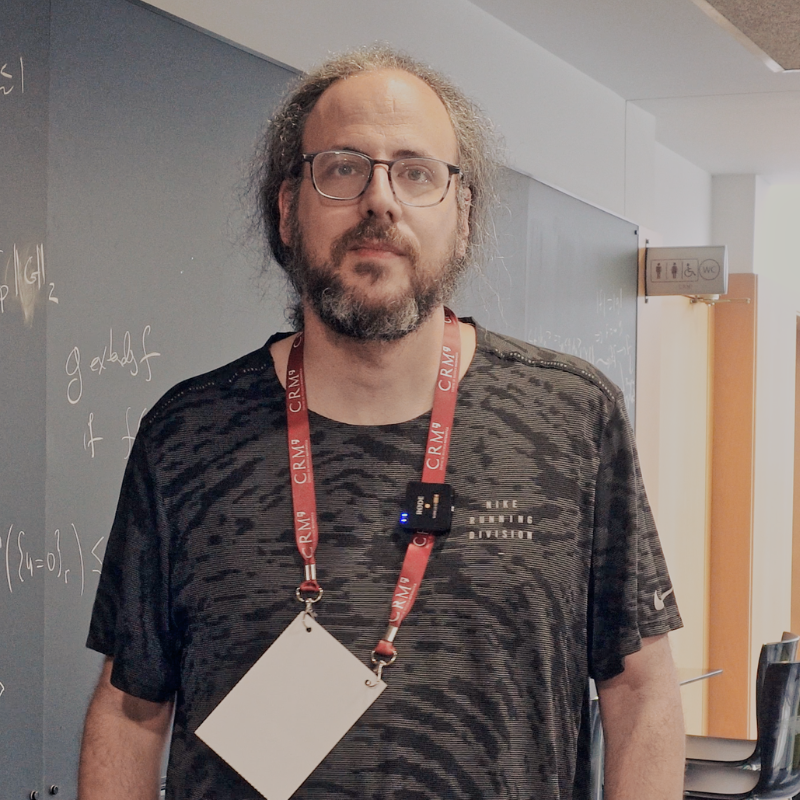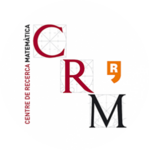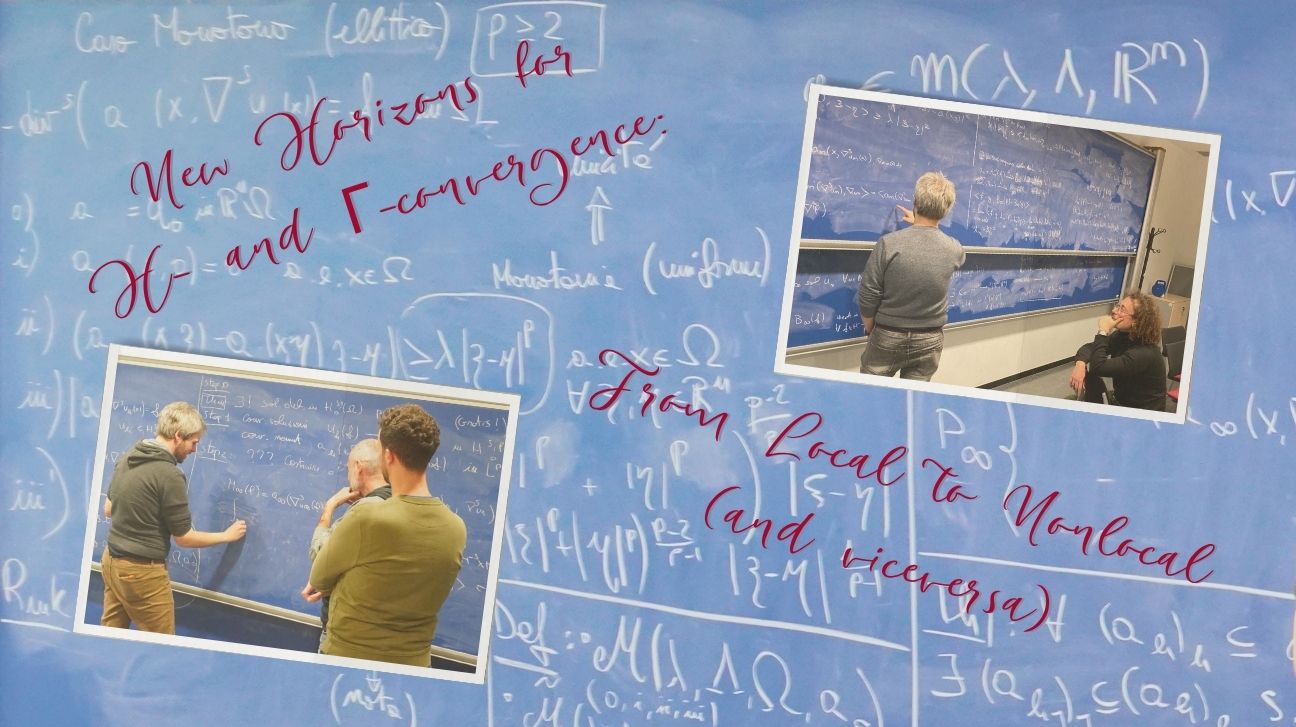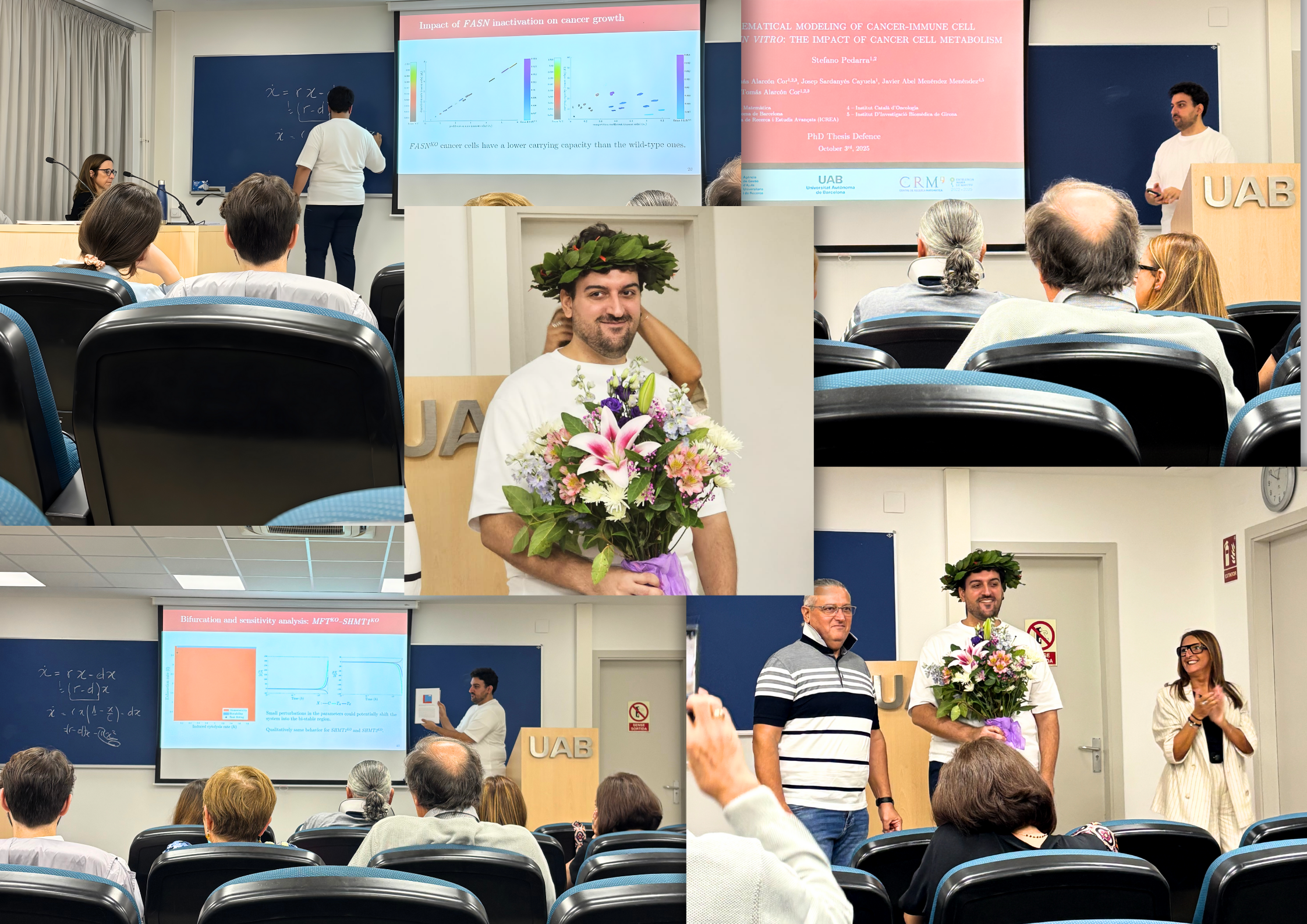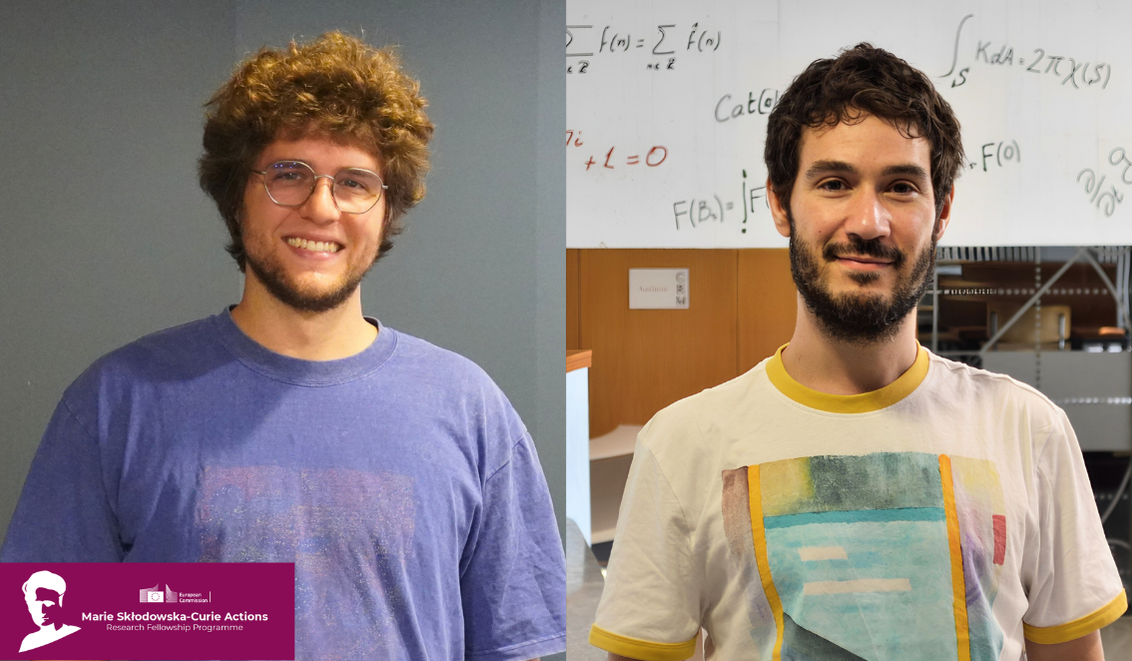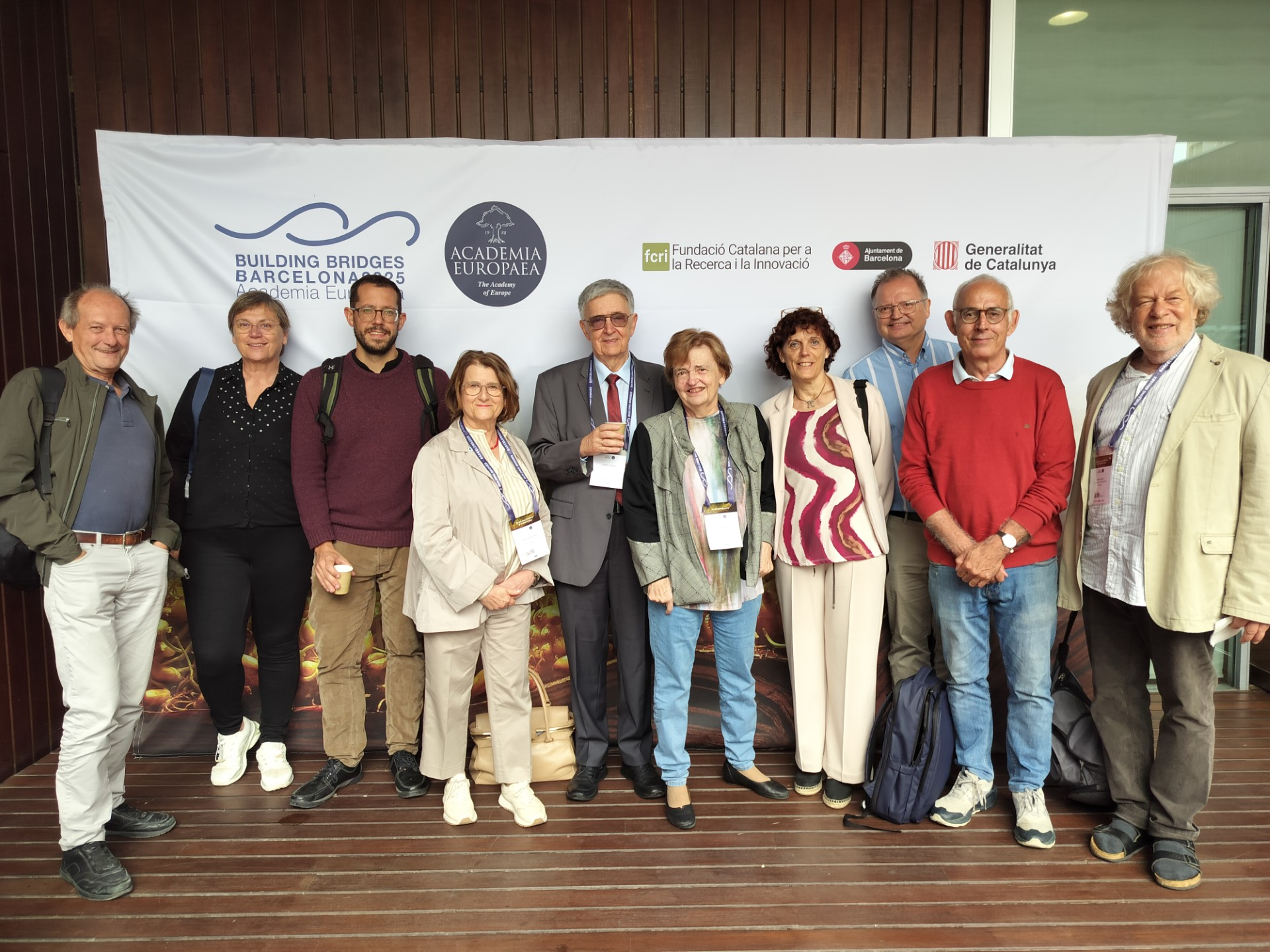
Javier Gómez-Serrano, professor at Brown University, has been awarded the 2025 R. E. Moore Prize for Applications of Interval Analysis, together with Tristan Buckmaster (Courant Institute of Mathematical Sciences, New York University) and Gonzalo Cao-Labora (École Polytechnique Fédérale de Lausanne). The award recognises their article Smooth imploding solutions for 3D compressible fluids, published this year in Forum of Mathematics, Pi.
The R. E. Moore Prize was created in 2002 by the editorial board of the journal Reliable Computing to honour the legacy of Ramon E. Moore, a pioneer in interval arithmetic. The prize, awarded every two to four years, celebrates outstanding contributions where interval analysis makes a decisive impact.
“It is the highest distinction within this community, and I feel very proud and fortunate to have received it,” says Gómez-Serrano. He is also quick to stress the collective nature of the award, underscoring the key role of Tristan Buckmaster and Gonzalo Cao-Labora: “This article began as Gonzalo’s undergraduate thesis between Princeton and the UPC, which gives his contribution extraordinary value and deserves recognition.”
Gómez-Serrano studied Mathematics and Telecommunications Engineering at the Universitat Politècnica de Catalunya, and obtained his PhD in Mathematics from the Universidad Autónoma de Madrid in 2013. He later held positions at Princeton and the Universitat de Barcelona before joining Brown University in 2022. His work sits at the crossroads of analysis, partial differential equations, fluid mechanics, spectral geometry, numerical computation, machine learning, and rigorous computer-assisted proofs.
Smooth implosions that trigger singularities in 3D fluids
In their prize-winning paper by Buckmaster, Cao-Labora and Gómez-Serrano (which also carries the affiliation of the CRM), construct the first smooth self-similar imploding solutions to the 3D Euler equations for all adiabatic exponents γ > 1, and show that these profiles can also be used to build asymptotically self-similar imploding solutions to the Navier–Stokes equations (for γ = 7/5). This represents the first rigorous example of singularity formation in compressible fluids with density bounded away from zero and constant at infinity.
“Singularities are the central piece of any differential equation. By understanding how singularities form, we also gain a deeper understanding of the model itself and its connection with the natural world around us.”
Singularities, Gómez-Serrano explains, are “the central piece of any differential equation, in fluids or beyond. The fact that a singularity appears tells us whether a problem has a solution or not, one of the most basic questions one can ask mathematically. By understanding how singularities form, we also gain a deeper understanding of the model itself and its connection with the natural world around us.”
“For example, with a simple quadratic equation, we know that if b² – 4ac < 0 there is no real solution. For partial differential equations there is no such criterion, and all studies are very complex and must be carried out equation by equation, not always successfully. By understanding the formation of singularities, we gain a much better understanding of the mathematical model and its relationship with the nature that surrounds us.”
To establish these results, the authors combined deep mathematical analysis with rigorous computer-assisted proofs based on interval arithmetic. “The classical pencil-and-paper approach is very limited when some quantity is not perturbative (for example, when the solutions are not small) and the calculations have to be done quantitatively,” says Gómez-Serrano. “A modern approach, mixing classical analysis with highly precise quantitative estimates, can make the difference between proving a result or not.”
Opening paths for future mathematics
Beyond its specific results, the paper also highlights the growing role of computer-assisted methods in mathematics. “This research helps bring computer-assisted proofs closer to the mathematical mainstream and shows how synergy produces stronger theorems. Our methods are already being reused in other contexts, and I believe this kind of approach will be very successful in the future, especially now that AI models have made programming much faster and easier.”
This is not Javier’s first step into the frontier between mathematics and computation. Just a few months ago, we reported on his collaboration with Terence Tao and DeepMind on AlphaEvolve, an AI tool for exploring open mathematical problems. In that piece, and in a video interview available on the CRM YouTube channel, he reflected on how AI is reshaping the way mathematicians work, opening faster and more collaborative paths to discovery.
The award ceremony will take place during SCAN’2025 (International Symposium on Scientific Computing, Computer Arithmetic, and Verified Numerical Computations), held in Oldenburg, Germany, from 22 to 26 September 2025.
This is the second time the award goes to a researcher affiliated with the CRM, following Àlex Haro, professor at the Universitat de Barcelona, who was previously distinguished with the same prize in 2018.
Citation
Buckmaster T, Cao-Labora G, Gómez-Serrano J. Smooth imploding solutions for 3D compressible fluids. Forum of Mathematics, Pi. 2025;13:e6. doi:10.1017/fmp.2024.12
Javier Gómez-Serrano is a Professor at Brown University, formerly a Distinguished Researcher at the University of Barcelona and earlier Instructor and Assistant Professor at Princeton. His research spans analysis, partial differential equations, fluid mechanics, spectral geometry, numerical computation, machine learning, and rigorous computer-assisted proofs. He has received awards such as the MCA Prize, the Antonio Ambrosetti Medal, the Antonio Valle Prize, the Vicent Caselles Prize, and the Princeton Junior Faculty Teaching Award. Between 2020 and 2022 he held an ERC Starting Grant, and his work is now supported by the NSF, with media coverage in outlets like Quanta Magazine and El País.
Subscribe for more CRM News
|
|
CRM CommPau Varela
|
Xavier Ros-Oton among the 65 most cited mathematicians in the world
ICREA professor at the Universitat de Barcelona and CRM affiliated researcher Xavier Ros-Oton appears on Clarivate's Highly Cited Researchers 2025 list, which this year reinstates the mathematics category after two years of exclusion.Citations are a strange way to...
New Horizons for H- and Γ-convergence: From Local to Nonlocal (and viceversa)
The researchers Maicol Caponi, Alessandro Carbotti, and Alberto Maione extended the H- and Γ-convergence theories to the setting of nonlocal linear operators and their corresponding energies. The authors were able to overcome the limitations of classical localization...
Diego Vidaurre joins the CRM through the ATRAE talent programme
Diego Vidaurre has joined the Centre de Recerca Matemàtica through the ATRAE programme, bringing his expertise in modelling spontaneous brain activity across multiple data modalities. His work focuses on understanding how the brain’s intrinsic dynamics shape...
El CRM a la Setmana de la Ciència: una ruta entre dones, formes i pensament
El CRM va participar en la 30a edició de la Setmana de la Ciència amb una ruta guiada que va combinar les biografies de dones matemàtiques amb obres d'art del centre, connectant ciència, història i creació artística.El 12 de novembre, el Centre de Recerca Matemàtica...
Stefano Pedarra Defends his PhD Thesis on the Interaction between Tumour Cells and the Immune System
Stefano Pedarra has completed his PhD at the Centre de Recerca Matemàtica with a thesis exploring how tumour-cell metabolism shapes the immune system’s ability to fight cancer. His work brought mathematics and biology into direct conversation, from building models to...
Els estudiants participants a la prova de preselecció de Bojos per les Matemàtiques visiten el CRM
La prova de preselecció de Bojos per les Matemàtiques va reunir estudiants de tot Catalunya a la UAB i al CRM, amb presentacions a càrrec de Montse Alsina, presidenta de la Societat Catalana de Matemàtiques, Núria Fagella, degana de la Facultat de Matemàtiques i...
Jordi Mompart highlights the role of artificial intelligence in sport at the XIII GEFENOL-DIFENSC Summer School
The XIII GEFENOL-DIFENSC Summer School gathered over thirty researchers from across Europe to explore how statistical physics helps explain complex phenomena in biology, ecology, networks, and social systems. In his closing lecture, Jordi Mompart (UAB) examined how...
Critical Slowing Down in Genetic Systems: The Impact of Bifurcation Proximity and Noise
An international collaboration including researchers from the Centre de Recerca Matemàtica (CRM) has shown that when several bifurcations occur close to one another, their interaction can dramatically amplify critical slowing down effect - the progressive slowdown of...
Two CRM researchers begin their Marie Skłodowska-Curie fellowships
Gustavo Ferreira and Tássio Naia, CRM postdoctoral researchers and new Marie Skłodowska-Curie fellows. Gustavo Ferreira and Tássio Naia, who joined the CRM in 2023 through the María de Maeztu programme, have started their Marie Skłodowska-Curie postdoctoral...
Matroid Week at CRM: A Collaborative Dive into Combinatorial Geometries
From October 13 to 17, 2025, the CRM hosted Matroid Week, a research school on combinatorial geometries and matroid theory. Courses by Laura Anderson and Geoff Whittle explored intersection properties and structural emergence in matroids. The event fostered deep...
László Lovász receives the 2025 Erasmus Medal in Barcelona
Mathematician László Lovász received the 2025 Erasmus Medal from the Academia Europaea yesterday at the PRBB in Barcelona, where he delivered the lecture “The Beauty of Mathematics”. Renowned for his work in graph theory and discrete mathematics, Lovász has shaped...
Combinatorial Geometry Takes Shape at the CRM
For one week in early October, the Centre de Recerca Matemàtica became a meeting ground for the world of combinatorial geometry. The Polytope Week research school gathered more than fifty participants from three continents to study the interplay...

